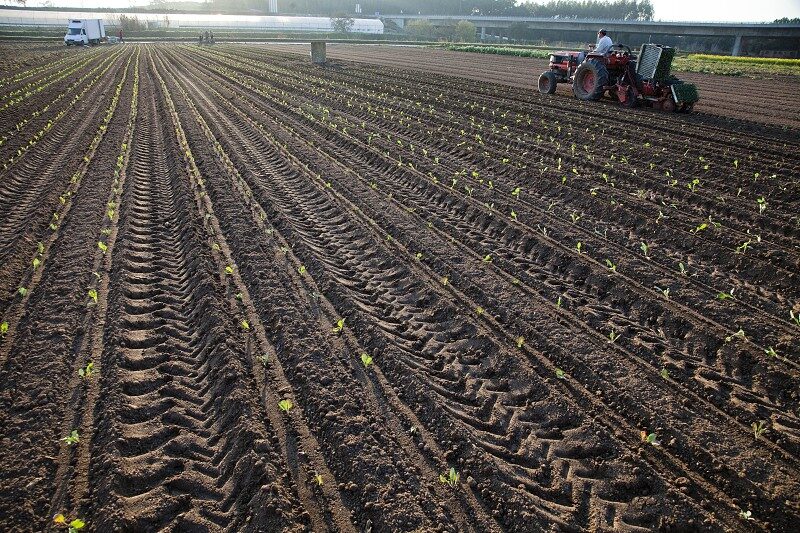Lis valley has 11,000 plots growing maize and vegetables – and dwindling water
Climate change has forced managers of an 80-year-old irrigation system in the valley of the River Lis, in west-central Portugal, to make changes to ensure that farmers have water available when they need it.
According to the association made up of the system’s users, there has been an obvious change in the rainfall pattern. “We need to have an irrigation system that fulfills (the) purpose of the system”, which covers an area of 2,000 hectares, divided into 11,000 plots, explains Henrique Damásio, managing director of the Lis Valley Irrigators and Beneficiaries Association.
According to Damásio “it’s not just the problem of not having enough water to water the crops”, which are mainly maize and vegetables. It is a question of “much more concentrated” rainfall which “infiltrates less into the land, because as it is torrential, it flows more directly into the water courses and is drained into the sea. This means that when it’s not raining, the water available in the environment is much less…”
Damásio tells Lusa that year after year, the River Lis “gets less and less water in the dry season, when it doesn’t rain” – so the challenge is to provide the area with an irrigation infrastructure that people can use when they need it, but that requires less water overall than before.
“If we continue with the same irrigation system as we had in the last 80 years, in a very short time… there will have to be rationing in the distribution of water, because it’s not enough for all that people want,” he said, noting that there have been years when this has already happened.
“Therefore, we need to adopt irrigation systems that use less water,” he said. This has in fact already started.
“Of the 2,000 hectares, we already have a block of 300 working with this system in which people swipe an identifier (similar to an electronic command to turn off a home alarm) next to the hydrant that supplies them with water” counted by the cubic metre on a meter, he explained, adding that users pay for the amount of water consumed.
This adaptation will now be implemented on another 400-hectare block, work on which is currently underway, with the aim being to extend the system to the remaining 1,300 hectares.
Damásio added that, in the context of climate change, another problem relates to more extreme phenomena, such as strong winds.
“Since we’re now very involved in the conversion of the irrigation system, we haven’t started that process yet, but we intend to start it in the not too distant future, which is the introduction of hedges,” he said.
The added value of hedges is that they reduce wind speed, divide up the property and, as they are not very tall, they do not cast shade over crops and provide shelter for wildlife.
Meanwhile, Damásio noted that in recent years records have been broken for the amount of rain falling during a period, so another concern is the waterproofed areas around the Vale do Lis hydro-agricultural perimeter.
“When these torrents happen, they cause flooding and thus damage crops,” he said, noting that when industrial and residential areas were created, no care was taken to channel rainwater.
Thus “when there are these sharp (downpours), which has been the pattern in recent years”, they affect farmers “a lot, because these waters come unduly, most of them into the hydro-agricultural perimeter and then cause damage to crops.
“This is now, in fact, our biggest negative externality and the one that worries me the most,” he admitted.
Source: LUSA


























